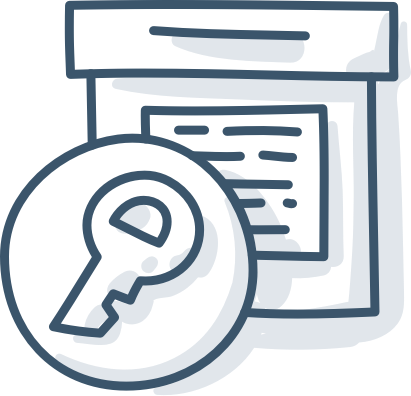The Data That Powers Business Internet
This page is a glimpse inside how we use billions of rows of data to make sense of broadband availability.
Business Internet is the result of more than 1,000,000,000 rows of live lookup data and several billion more rows of pre-calculated data.
Of this data about 50% public and 50% proprietary.
We're always adding more data to our databases so this page isn't designed to be authoritative or exhaustive, but instead is designed to give you an overview of what data we use and where it comes from.
PUBLIC DATA:

When it comes to public data, we are incredibly grateful to the hard work the FCC, Census Bureau, and public mapping agencies and organizations. Without their excellent work, building an accurate and fast tool that includes all providers wouldn't have been possible.
Coverage Data: We use coverage datasets provided by FCC and other state level organizations as a starting point for many of our other datasets.
While we'd love to say these datasets are perfect, we've put a lot of love into them to make them useable.
Since 2014, we've spent 1000s of working hours of tedious hand editing, merging, and validating to make these public datasets ready and usable. We share this not to discount the value of these datasets, but instead to educate those of you who read this page and import those datasets only to notice that our results are substantially different.
All of this said, one thing is for certain: these public datasets have empowered us to create the most comprehensive and unbiased tool possible.
Business Statistics: By using the Census Bureau's statistics on businesses across the country we can help give a better picture of how broadband coverage is distributed across industries along with which industries attract investment and others that may be left underserved.
Map Data: Behind the scenes of every query on Business Internet, we do a tremendous amount of geospatial processing to come up with distances between known network locations and queried locations. While it is much faster to give "as a bird flies" estimates, we use public mapping data to generate as close to possible real world estimates.
PRIVATE DATA:

Private data is the secret ingredient that makes Business Internet and BroadbandNow more accurate than other tools.
We like to think of public data as the backdrop of our portrait of availability. With the background filled in, we carefully overlay our large private datasets as the brush strokes which give the public data deeper meaning. After that, we overlay individual provider data which add the finer details and highest level of meaning.
This process and approach allow us to present the most accurate portrait of broadband availability and competition available.
At a high level this data falls into four broad categories:
Provider Data: We work with providers nationwide to update and manage their coverage areas so we can create the best tools possible. We collect both general network coverage data and lit address data beyond what is compiled by the FCC. If you're a provider and don't see your coverage, getting listed is free and easy.
Pricing Data: We collect pricing data by working with provider resellers to get a clearer picture of what businesses are paying nationwide. (Pricing is always separated from provider providing the service in our datasets. Don't ask us for provider specific pricing; we don't have it.)
User Data: Getting honest reviews from broadband users isn't easy, so we've implemented a 100% IP Verified system that only allows users who are currently using a provider to leave feedback, reviews, and ratings on their provider. We collect this data from randomly selected users who visit both BroadbandNow.com and BusinessInternet.com.
Other Data: Beyond the datasets outlined above, we also have several other private datasets from lateral industries that we can't go into the details on. Without these, we wouldn't be able to offer such accurate results.